Perform Insulation Resistance Test to Identify Faulty String
Insulation Resistance Test Overview
Insulation resistance testing is performed by “injecting” potential onto the conductor in the form of DC voltage, with a second conductor or ground conductor as a reference point. Any “leakage" of the potential indicates a fault in the insulation.
- Insulation Resistance Tester in 1000 V test mode (Tesla recommends Klein ET600)
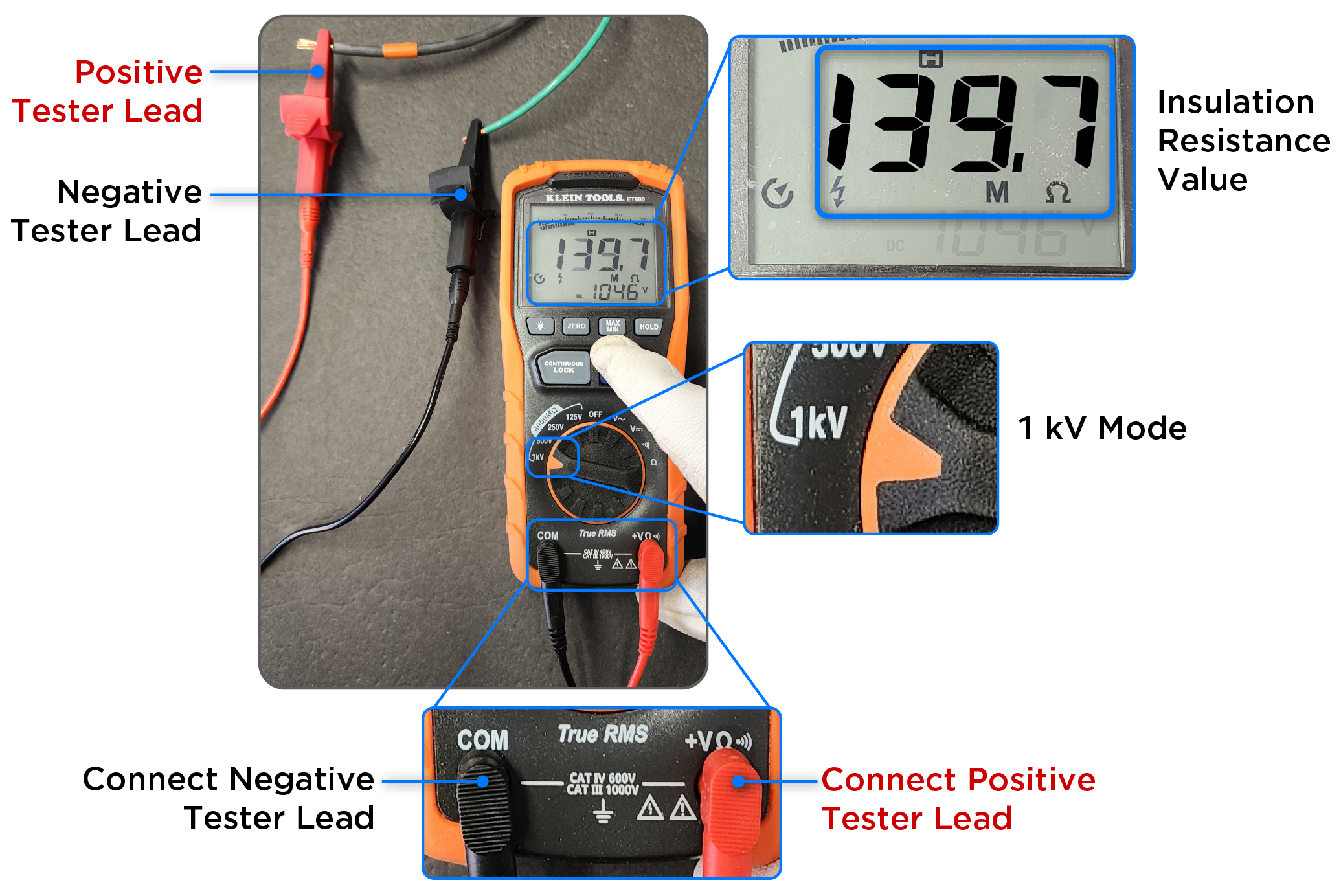
Identify the Faulty String
- Safely shut the system down:
- Initiate Rapid
Shutdown:
- For Powerwall+, push the System Shutdown Switch if one is present, then turn the Enable switch OFF.
- For Tesla Solar Inverter, turn the AC disconnect OFF if one is present, then open the Solar Inverter circuit breaker.
- Open the Powerwall+ / Tesla Solar Inverter circuit breaker (turn OFF) if not already done.
- Remove the DC
Isolator connector.
Figure 2. Tesla Solar Inverter DC Isolator 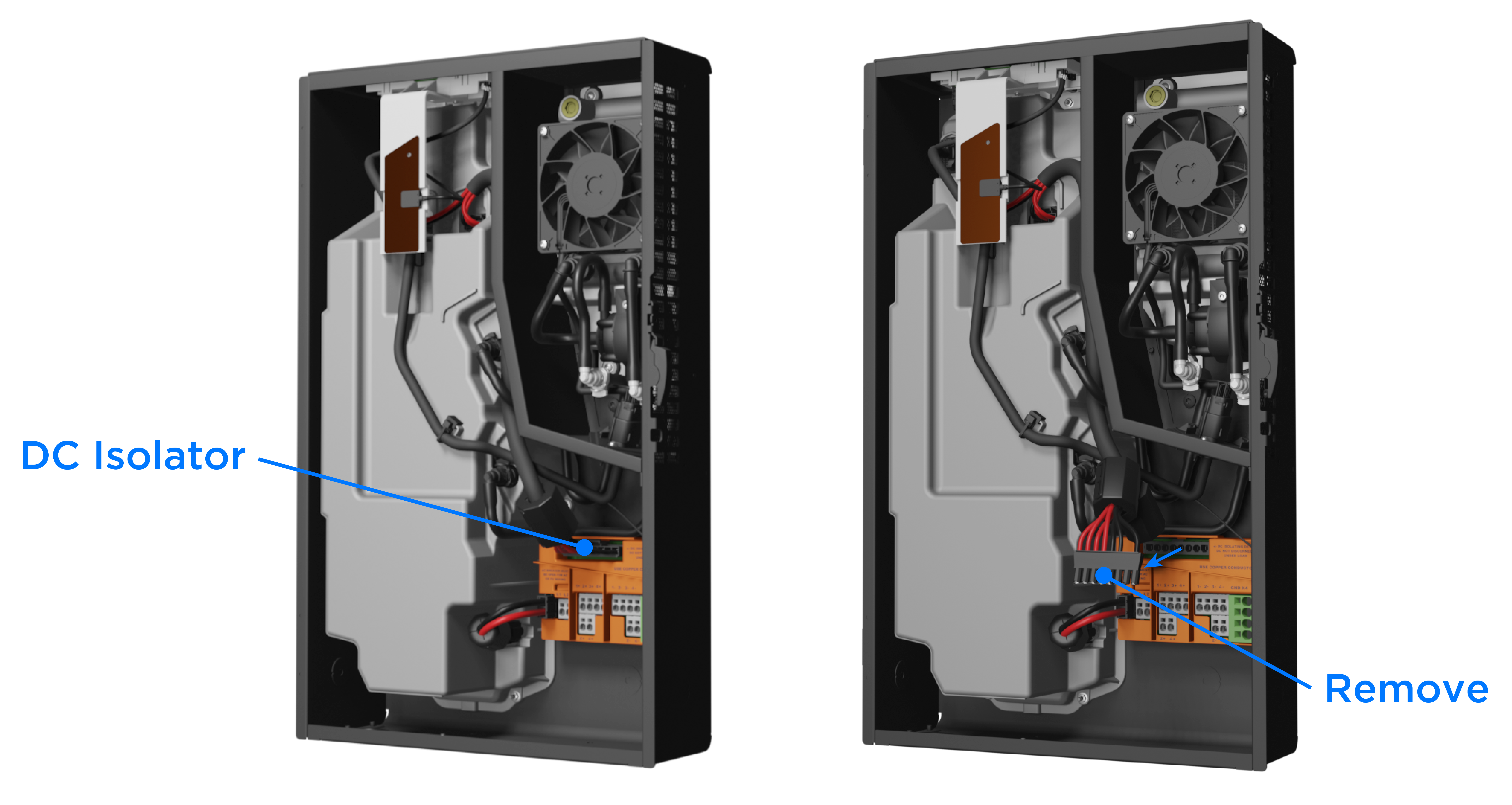
- Wait 30 seconds before proceeding with any work.WarningConfirm Powerwall+ / Tesla Solar Inverter is de-energized before proceeding. Confirm the breaker is open (OFF) and solar production is disabled in Tesla One.
- Initiate Rapid
Shutdown:
- Plug the positive and
negative meter tester leads into the meter. For combination insulation
resistance and multimeter testers, insert the test leads into the designated
insulation testing ports.
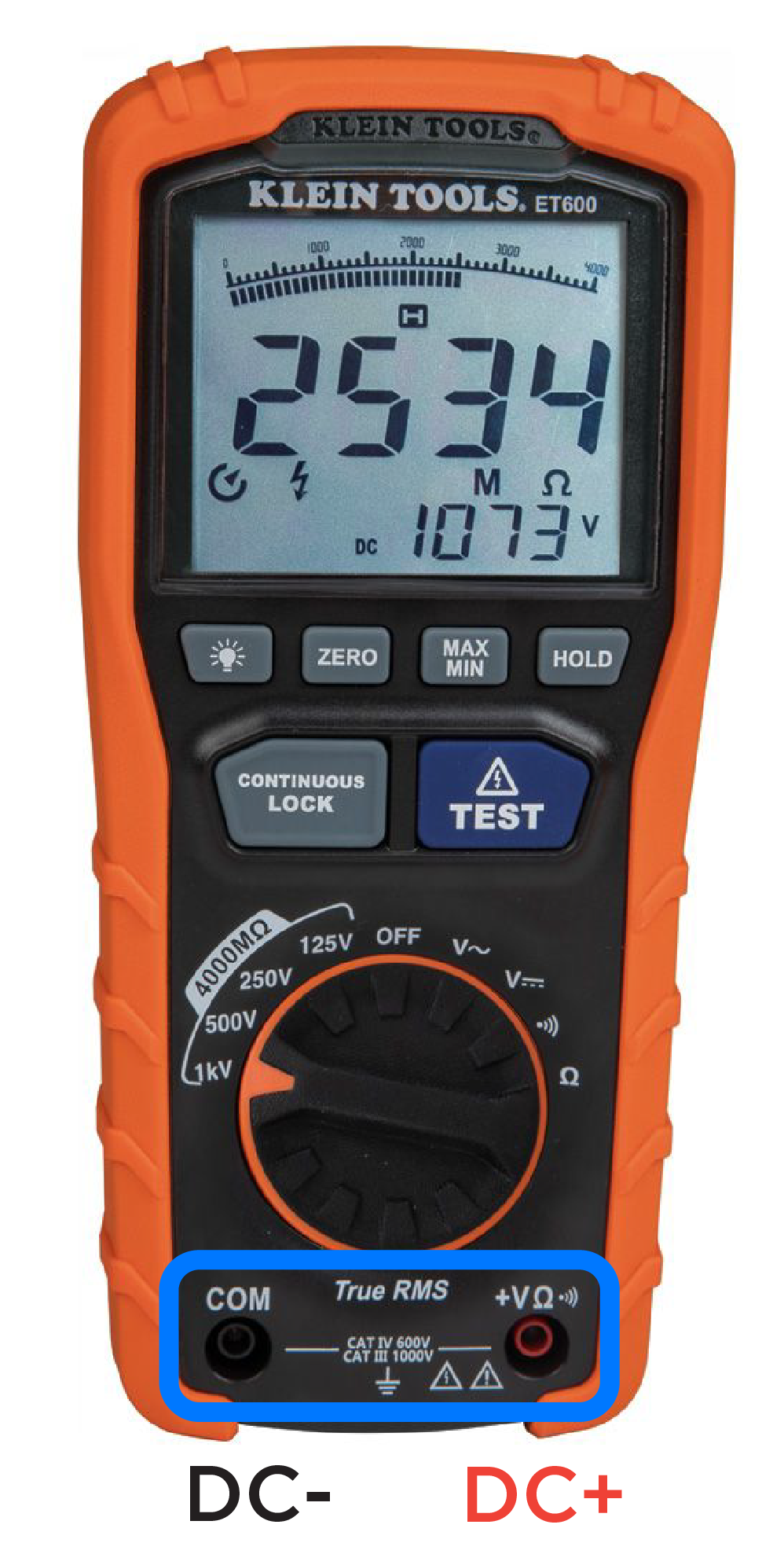
- Set the tester to 1000 V mode.
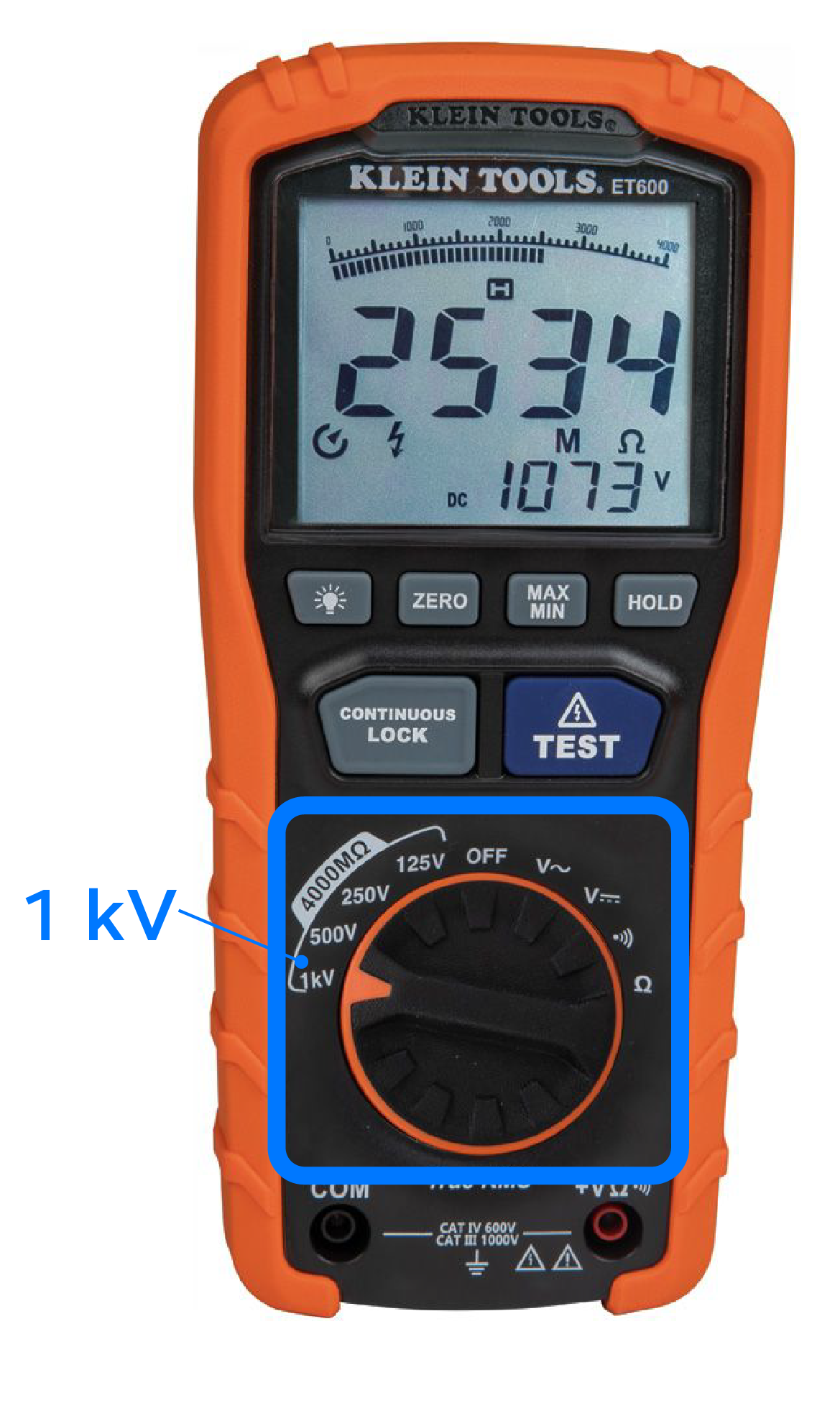
- Disconnect both (positive and
negative) conductors to test a string. The conductors can be disconnected
from the inverter (on the ground) or on the roof.NoteParalleled strings must be tested independently. This must be done on the roof, and can be done by undoing Y-connectors or removing jumpers inside the combiner box.
- Test the string's positive conductor:
- Connect the positive tester lead (red) to the positive conductor.
- Connect the negative
tester lead (black) to ground / equipment grounding conductor (EGC).
Figure 3. Testing the Insulation Resistance of the Positive Conductor 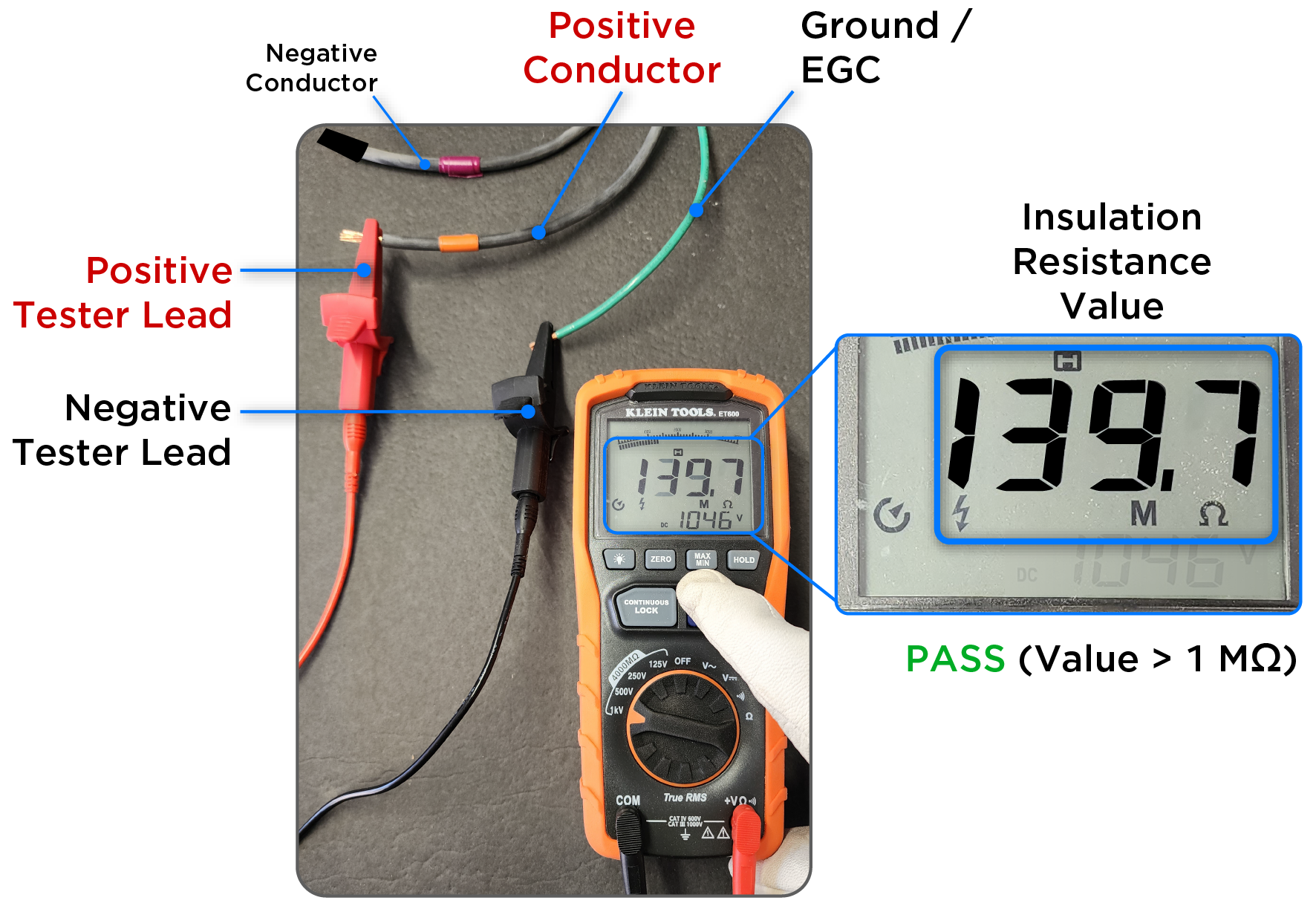
- Tape the ends of the wire on the opposite end of the run to help isolate.
- Press and hold the TEST button
to begin the test. Allow the reading to stabilize before recording
the measurement (take the resistance value while STILL holding
the TEST
button).NoteKeep the test leads connected to the circuit until it is completely discharged, and the display shows near zero volts.
- If the insulation resistance is less than 1 Mega-Ohm, this string is
causing the isolation failure. NoteString voltage to ground (V DC) is expected to be a high value because it indicates an open circuit.
- Test the string's negative conductor:
- Connect the positive tester lead (red) to the negative conductor.
- Connect the negative
tester lead (black) to ground / EGC.
Figure 4. Testing the Insulation Resistance of the Negative Conductor 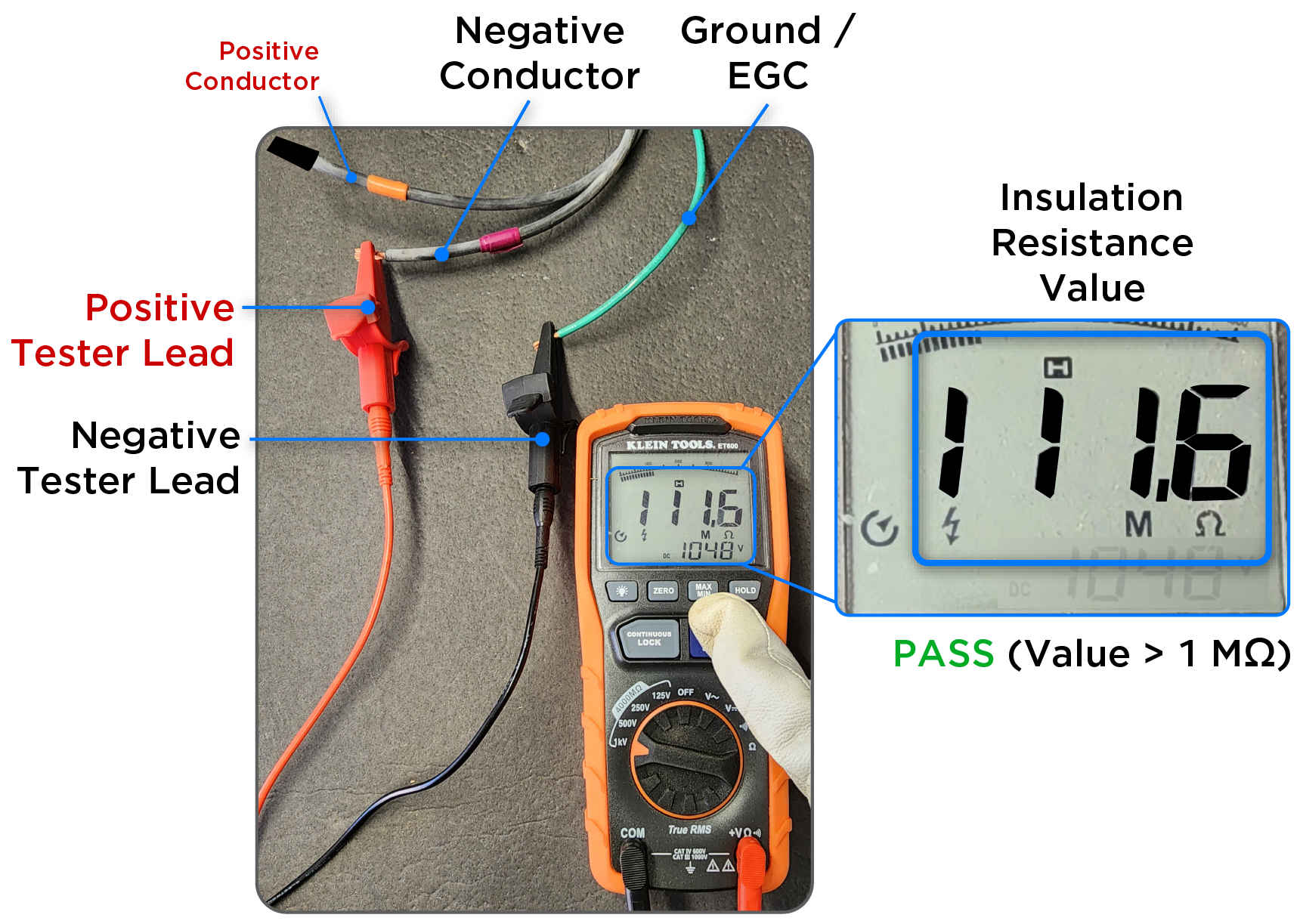
- Tape the ends of the wire on the opposite end of the run to help isolate.
- Press and hold the TEST button to begin the test. Allow the
reading to stabilize before recording the measurement (take the
resistance value while STILL holding the TEST
button).NoteKeep the test leads connected to the circuit until it is completely discharged, and the display shows near zero volts.
- If the insulation resistance is less than 1 Mega-Ohm, this string is
causing the isolation failure. NoteString voltage to ground (V DC) is expected to be a high value because it indicates an open circuit.
Identify the Failure in the Faulty String
To find the failure, perform a close inspection of all the components in the faulty string:
- Inspect where the wires exit conduit, and where wires pass through conduit bodies, as nicked wires may occur here
- Check for wires pinched by
mounting hardware or damaged by fastenersNoteFor Solar Roof installations, hardware may be accidentally run through wires when installing the tiles.
- Check for improper field-made connectors or improper crimps
- Look for evidence of damaged
modules:
- Microcracks
- Signs of water intrusion
- Module leads are bent at sharp angles
- For the faulty string, try testing the string with the DC grounding conductor (EGC) removed from the inverter's ground terminal; if the string passes self-test with the grounding conductor removed, it is likely the string is faulting to ground somewhere
If any of the above issues are found, fully replace the damaged wire and/or perform the necessary repairs to ensure the system's lifespan is not compromised.
If none of the issues above are observed, see MCI Diode Test and Resistance Test (MCI Health Tests) to determine if a faulty MCI is causing the isolation failure.